UPSC Daily Current Affairs: 30th October 2024 | Current Affairs & Hindu Analysis: Daily, Weekly & Monthly PDF Download
GS3/Environment
Greenhouse Gas Bulletin
Source: NDTV
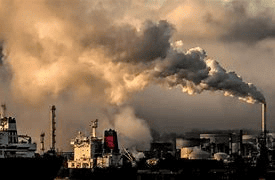
Why in News?
According to a new report by the World Meteorological Organization (WMO), greenhouse gas levels surged to a new record in 2023, rising by more than 10% in just two decades.
About Greenhouse Gas Bulletin:
- The bulletin has been published annually since 2004 by the WMO.
- It presents globally averaged surface mole fractions for three key gases: Carbon Dioxide (CO2), Methane (CH4), and Nitrous Oxide (N2O).
- The report compares current mole fractions with those from the previous year and preindustrial levels.
- It offers insights into changes in radiative forcing by long-lived greenhouse gases (LLGHGs) and the individual contributions of each gas to the overall increase.
- This publication is one of WMO’s flagship reports, aimed at informing discussions at the UN Climate Change conference (COP).
Highlights of the Bulletin:
- In 2023, the globally averaged surface concentrations were 420 parts per million (ppm) for CO2, 1934 parts per billion (ppb) for CH4, and 9 ppb for N2O.
- Carbon dioxide is the primary greenhouse gas associated with human activity, accounting for approximately 64% of the warming effect on the climate, primarily due to fossil fuel combustion and cement production.
- The long-term increase in carbon dioxide levels is largely attributed to fossil fuel use, although variations can occur yearly due to the El Niño-Southern Oscillation, which affects carbon uptake and release processes, including fires.
- Methane is a potent greenhouse gas with a shorter atmospheric lifespan of about a decade, contributing around 16% of long-lived greenhouse gases.
- Nitrous oxide, an ozone-depleting substance, is responsible for about 6% of the radiative forcing caused by long-lived greenhouse gases.
- From 1990 to 2023, the warming effect of long-lived greenhouse gases increased by 51.5%, with CO2 contributing approximately 81% of this uptick.
GS2/Governance
Mission Amrit Sarovar
Source: MSN
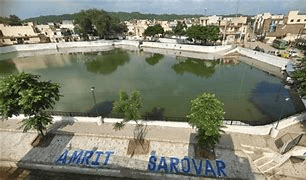
Why in News?
Recently, the Prime Minister of India announced the successful construction of over 60,000 Amrit Sarovars in villages, establishing a lasting legacy for future generations.
About Mission Amrit Sarovar:
- Launched on 24th April 2022, this initiative aims to construct 75 Amrit Sarovars in honor of the 75th year of India's independence as part of Azadi ka Amrit Mahotsav.
- The mission addresses the water scarcity issues prevalent in rural regions of the country.
- Each Amrit Sarovar will feature a pondage area of at least 1 acre, capable of holding approximately 10,000 cubic meters of water.
- It emphasizes water conservation, encourages community involvement, and promotes effective use of the soil excavated from these water bodies to enhance infrastructure projects.
- The initiative adopts a whole-of-government approach, engaging six ministries and departments, including:
- Department of Rural Development
- Department of Land Resources
- Department of Drinking Water and Sanitation
- Department of Water Resources
- Ministry of Panchayati Raj
- Ministry of Forest, Environment and Climate Change
- There is no specific financial allocation dedicated solely to Mission Amrit Sarovar.
- Bhaskaracharya National Institute for Space Applications and Geo-informatics (BISAG-N) has been appointed as the technical partner for this mission.
GS3/Environment
North Atlantic right whale
Source: Earth

Why In News?
Recent research indicates that the population of North Atlantic right whales has seen an increase of approximately 4% from the levels recorded in 2020. This follows a significant decline of nearly 25% in their population from 2010 to 2020.
About North Atlantic right whale:
- North Atlantic right whales are migratory creatures, traveling to warmer waters during the winter and returning to cooler polar regions in late summer.
- These whales are primarily found in the temperate and subpolar regions of the North Pacific oceans.
Habitat:
- Depending on the season and hemisphere, right whales typically spend significant time near bays, peninsulas, and in shallow coastal areas.
Distribution:
- The North Atlantic right whale population is mainly concentrated along the eastern coast of the United States and Canada.
- There are three recognized species of right whales globally: Southern right whales (Eubalaena australis), North Atlantic right whales (Eubalaena glacialis), and North Pacific right whales (Eubalaena japonica).
Feeding Behavior:
- These whales utilize a unique feeding method known as skimming, where they swim slowly through water, taking in plankton clouds with their mouths partially open, and filtering the plankton using their long baleen plates.
Conservation Status:
- IUCN Status: Critically endangered
- CITES Classification: Appendix I
GS2/Polity
Why India is at risk of becoming a ‘diminishing democracy’
Source: The Hindu

Why in News?
In her book “Democracy on Trial: Majoritarianism and Dissent in India”, Zoya Hasan highlights that while India's democratic framework is robust during elections, it has faced challenges concerning fairness and freedoms, particularly due to the rise of majoritarianism since 2014.
Factors Contributing to the Erosion of Civil Liberties in India:
- Majoritarian Politics: Over the past decade, India's democracy has increasingly leaned towards majoritarianism, leading to the marginalization of minority rights, especially those of Muslims. This shift towards majoritarian perspectives undermines the universal protection of civil liberties and erodes the democratic principles of inclusion and equality.
- Compromised Media Landscape: Historically, the media served as a watchdog over governmental power. However, it now often acts as a mouthpiece for the government, which has diminished public discourse regarding civil rights and accountability, thereby limiting the media's ability to protect civil liberties.
- Legislation Targeting Minorities: Laws like the Citizenship (Amendment) Act (CAA) are perceived as discriminatory against specific religions, particularly when viewed in conjunction with the National Register of Citizens (NRC). Such laws challenge the constitutional guarantee of equal rights for all, placing excessive pressure on certain communities and further undermining civil liberties.
Role of Political Institutions in Undermining Democracy:
- Judicial Autonomy and its Challenges: Although the judiciary has traditionally upheld democracy, recent trends suggest a decline in judicial independence. There are instances where courts seem hesitant to confront the executive, possibly due to political pressures affecting judicial autonomy, which is crucial for maintaining checks on power.
- Media’s Decline as a Check on Power: The independence of the media has waned as corporate and political influences have taken hold, restricting its capacity to hold the government accountable.
- Legislative and Executive Power Dynamics: The concentration of power within the executive branch, alongside a legislative body that often aligns with the ruling party's agenda, has led to a reduction in checks and balances.
Impact of Political Polarization on Democratic Processes:
- Divisive Identity Politics: Identity-based polarization is intensifying, as seen in significant events like the Ayodhya dispute and the Shaheen Bagh protests, illustrating how political narratives can position majority identities against minority rights.
- Silencing of Dissent: Government responses to protests, such as those against the CAA, often involve force, showcasing a reduced tolerance for dissenting voices.
Steps Taken by the Election Commission of India:
- Voter Education and Awareness Campaigns: The ECI has initiated extensive campaigns to educate voters on the electoral process, emphasizing the importance of informed voting.
- Monitoring and Regulation of Political Parties: Increased scrutiny over the funding and activities of political parties has been implemented to ensure transparency.
- Strengthening Electoral Laws: Recent amendments to electoral laws aim to enhance the integrity of elections.
- Use of Technology: The ECI has adopted technology-driven solutions, including Electronic Voting Machines (EVMs) and Voter Verified Paper Audit Trails (VVPATs), to ensure greater transparency and reliability in the voting process.
Way Forward:
- Strengthening Institutional Independence: It is essential to reinforce the autonomy of key institutions like the judiciary, media, and law enforcement through stricter legal safeguards and transparent appointment processes.
- Promoting Inclusive and Balanced Governance: Mechanisms should be established to ensure equal representation and protection for all communities, addressing grievances through impartial review processes. Implementing inclusive governance policies can help mitigate majoritarian biases and cultivate a more cohesive democratic environment.
Mains PYQ:
To enhance the quality of democracy in India, the Election Commission of India proposed electoral reforms in 2016. What are the suggested reforms and how significant are they in making democracy successful? (UPSC IAS/2017)
GS3/Environment
What is Chronic Wasting Disease (CWD)?
Source: Times of India
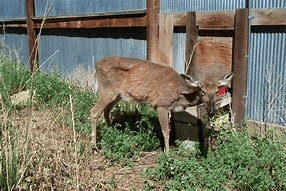
Why in News?
Recently, authorities in New York State confirmed the presence of Chronic Wasting Disease (CWD) in a deer facility, highlighting its significant effects on populations of deer, elk, and moose.
About Chronic Wasting Disease (CWD):
- CWD is a progressive and fatal neurological disorder that affects members of the cervid family, including deer, elk, and moose.
- The disease is caused by abnormal proteins known as prions, which lead to the deterioration of brain tissue, causing severe neurological symptoms, significant weight loss, and ultimately death.
- CWD falls under a broader category of diseases referred to as Transmissible Spongiform Encephalopathies (TSEs), which also include mad cow disease in cattle and Creutzfeldt-Jakob disease in humans.
Transmission:
- CWD spreads among animals through bodily fluids such as saliva, urine, and feces, as well as through contaminated soil and vegetation.
- Currently, there is no evidence to suggest that CWD can be transmitted to humans.
- The prions responsible for CWD can remain viable in the environment for extended periods, complicating control efforts.
Symptoms:
- Symptoms of CWD develop gradually and may manifest as severe weight loss, lack of coordination, excessive drooling, increased thirst, a diminished fear of humans, and eventual death.
- Notably, symptoms may not become apparent until 16 months after an animal has been infected.
Treatment:
- CWD is invariably fatal for infected animals, and there are currently no vaccines or effective treatments available.
GS2/International Relations
Comprehensive Nuclear-Test-Ban Treaty Organization (CTBTO)
Source: Times of India

Why in News?
The Comprehensive Nuclear-Test-Ban Treaty Organization (CTBTO) has recently dismissed rumors regarding a potential nuclear test by Iran.
About the CTBTO:
- The CTBTO is an international entity located in Vienna, Austria.
- It was established to enforce the Comprehensive Nuclear Test-Ban Treaty (CTBT).
- The primary goal of the CTBT is to prohibit all nuclear explosions globally.
Key Features of the CTBT:
- The CTBT is a multilateral treaty that was opened for signatures in 1996.
- Participating states commit to banning nuclear explosions in any environment, whether for military or civilian use.
- The treaty includes mechanisms for monitoring compliance and data collection.
Status of the Treaty:
- As of now, 183 states have signed the treaty, while 164 have ratified it.
- The treaty has not yet come into effect because eight specific states among 44 (known as Annex-2 states) have not ratified it.
- The Annex-2 states that have yet to ratify include the United States, China, Iran, Egypt, Israel, India, Pakistan, and North Korea.
Verification Mechanisms:
- The treaty provides for a global network of monitoring facilities to ensure compliance.
- It also allows for on-site inspections in case of any suspicious activities.
GS2/Polity
Civil Registration System (CRS) Mobile App
Source: The Hindu
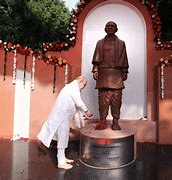
Why in news?
The Union Home Minister has recently introduced the Civil Registration System (CRS) mobile application, aiming to enhance governance by integrating technology into public services.
About Civil Registration System (CRS) Mobile App:
- The CRS mobile application is specifically created to enable the registration of births and deaths throughout India.
- This application was developed by the Registrar General and Census Commissioner of India.
- Its primary objective is to streamline and accelerate the registration process, making it more user-friendly and accessible for citizens.
- With this app, individuals can register births or deaths anytime and from any location, using their state's official language.
Key Facts about Registrar General and Census Commissioner of India (RGCCI):
- The RGCCI operates under the Ministry of Home Affairs of the Government of India.
- It is tasked with executing the decennial Census of India and gathering demographic and population data.
- Additionally, it oversees the Civil Registration System (CRS) throughout the country.
- Established in 1961, the RGCCI plays a vital role in policy formulation by providing essential data that supports social, economic, and political decisions at various government levels.
- The head of this office is the Registrar General of India.
GS1/History & Culture
Four replicas of Konark Wheels at Rashtrapati Bhavan
Source: India Today
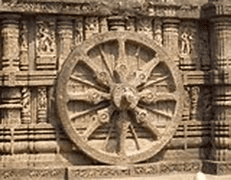
Why in news?
Four replicas of the Konark wheels, made of sandstone, have been installed at Rashtrapati Bhavan Cultural Centre and Amrit Udyan.
About Konark Wheels
- Details
- The temple is constructed in the form of a massive chariot pulled by seven horses and features a total of 24 wheels.
- Dimensions of Wheels
- Each wheel measures 9 feet 9 inches in diameter, consisting of 8 wider spokes and 8 thinner spokes.
- Symbolism of Wheels
- The wheels symbolize various aspects of time:
- 7 horses represent the days of the week.
- 12 pairs of wheels signify the 12 months of the year.
- 24 wheels correspond to the 24 hours in a day.
- 8 spokes symbolize prahars, which are three-hour periods.
- The wheels symbolize various aspects of time:
- Architectural Features
- The wheels are elaborately carved, showcasing intricate designs including foliage, animals, and figures of women in various poses.
- The rims of the wheels are adorned with decorative carvings.
- Sun Dial Functionality
- Two of the wheels serve as a sundial, accurately indicating time from sunrise to sunset by using the shadow cast by the axle.
- Modern Representation
- The Konark Wheel is featured on Indian currency, specifically on the old Rs. 20 and the new Rs. 10 notes, symbolizing the rich cultural heritage of Odisha.
- The Rs. 10 note released by the RBI on January 5, 2018, showcases the Konark Wheel on its reverse side.
- Its Significance
- The Konark Wheel, functioning as an ancient sundial, symbolizes the advanced knowledge of timekeeping and astronomy in 13th-century India.
- Its intricate carvings display exceptional craftsmanship and cultural importance, representing the cycle of life and the worship of Surya, the Sun God.
- The depiction of the wheel on Indian currency emphasizes its lasting legacy and importance in enhancing national identity and promoting tourism in Odisha.
Back2Basics: Konark Sun Temple
- Location and History
- Situated approximately 64 km from Bhubaneswar.
- Constructed in the 13th century, around 1250 CE, during the reign of King Narasimhadeva I of the Eastern Ganga Dynasty.
- Architectural Style
- The temple exemplifies Kalinga architecture, renowned for its intricate stone carvings and elaborate sculptures.
- Built from Khondalite stone, known for its durability and suitability for detailed carvings.
- Design Structure
- Originally designed as a structure that included a sanctum (deul) and a jagamohan (assembly hall).
- Much of the structure has collapsed, but it was once richly adorned with exquisite carvings.
GS3/Economy
Mission for Integrated Development of Horticulture
Source: Indian Express

Why in news?
The Union Government has made the decision to incorporate four innovative components—Hydroponics, Aquaponics, Vertical Farming, and Precision Agriculture—into the Mission for Integrated Development of Horticulture (MIDH).
About Mission for Integrated Development of Horticulture:
- It is a Central Sponsored Scheme (CSS) initiated in 2014-15 aimed at the comprehensive development of the horticulture sector.
- The mission encourages the growth of a variety of crops including fruits, vegetables, root and tuber crops, mushrooms, spices, flowers, aromatic plants, as well as coconut, cashew, cocoa, and bamboo.
- MIDH also offers technical guidance and administrative assistance to State Governments and State Horticulture Missions (SHMs) for initiatives like the Saffron Mission and other horticultural activities under the Rashtriya Krishi Vikas Yojana (RKVY) and National Mission for Sustainable Agriculture (NMSA).
Funding:
- Under the MIDH, the Government of India (GOI) contributes 60% of the total expenditure for development programs across all states except for those in the North East and Himalayan regions.
- For the North Eastern and Himalayan states, the GOI covers 90% of the costs.
- In the case of the National Horticulture Board (NHB), Coconut Development Board (CDB), Central Institute for Horticulture (CIH), Nagaland, and other National Level Agencies (NLA), the GOI provides full funding (100%).
Key Components:
- National Horticulture Mission (NHM) - This mission focuses on enhancing horticulture across states and union territories.
- Horticulture Mission for North East and Himalayan States (HMNEH) - Tailored to meet the unique requirements of the northeastern and Himalayan regions.
- National Bamboo Mission (NBM) - Dedicated to promoting the cultivation of bamboo and developing its value chain.
- Coconut Development Board (CDB) - The board works on advancing the coconut sector.
- Central Institute of Horticulture (CIH) - Established in Medizipehima, Nagaland, in 2006-07, it provides technical support through farmer training and capacity building in the North Eastern Region.
GS2/Polity
Delimitation, women’s quota
Source: Indian Express
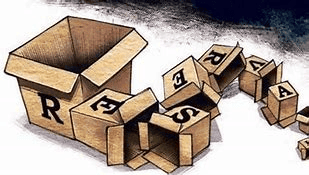
Why in News?
The Centre has indicated that the long-delayed Census may commence next year and be completed by 2026. This Census will be crucial for redefining electoral boundaries and implementing women's reservations within elected bodies.
Implications of the Women’s Reservation Bill for women’s political representation in India:
- Increased Representation: Upon implementation, the bill will allocate 33% of seats in both the Lok Sabha and state legislative assemblies for women. This will significantly enhance women's presence in politics and promote a more inclusive legislative environment.
- Long-Term Social Change: An increase in female legislators is expected to elevate the focus on issues pertinent to women's rights, safety, and empowerment, potentially facilitating enduring societal changes towards gender equality.
- Gradual Integration: The bill mandates a 15-year implementation period post-implementation, allowing for the gradual integration of women into the political landscape of India and incentivizing more women to engage in politics.
Key features of the Women’s Reservation Bill:
- Reservation of Seats: The legislation reserves one-third of all seats in the Lok Sabha and state assemblies for women, including those already designated for Scheduled Castes (SCs) and Scheduled Tribes (STs).
- Implementation Timeline: The reservation will take effect following the completion of the next Census, which has not yet been scheduled. The law is designed to be in effect for 15 years, with options for extension.
- Rotating Constituencies: The seats reserved for women will be rotated with each delimitation exercise to ensure equitable representation across various regions.
How does the delimitation process affect the implementation of the Women’s Reservation Bill?
- Dependency on Delimitation: The Women's Reservation will only be enforceable after a delimitation exercise based on the Census data. This makes the timeline for the reservation dependent on the upcoming Census, expected to conclude in 2026.
- Impact on Seat Allocation: The delimitation process is likely to expand the total number of Lok Sabha seats, making the introduction of the 33% reservation less disruptive. For instance, if the Lok Sabha increases to around 770 seats, this will facilitate a more balanced representation of both male and female members without significantly reducing the number of seats held by male incumbents.
Challenges and Criticisms Surrounding the Women’s Reservation Bill and Its Implementation:
- Delay in Implementation: As the reservation is contingent on the delimitation process, the immediate benefits of the bill are postponed. Critics argue that the reservation could be enacted sooner without the delays caused by dependence on the Census and delimitation.
- Intra-Party Resistance: Male incumbents may oppose the bill out of concern for losing their positions. Political parties might struggle to balance this opposition with the necessity for compliance, even with an increase in the total number of seats.
- Exclusion of Other Marginalized Women: The bill does not include sub-quotas for women from marginalized backgrounds, such as SC/ST/OBCs. This has led to criticism that it may primarily benefit women from more privileged backgrounds, failing to address the broader representation gap for all women.
- Dependence on Census Accuracy: Any delays or inaccuracies in the Census could postpone the bill’s impact or lead to misrepresentation due to reliance on outdated demographic data.
Way forward:
- Expedite Delimitation and Census: It is essential to streamline the Census and delimitation processes to ensure timely data collection and boundary adjustments. This will enable earlier enactment of the reservation without unnecessary delays.
- Include Sub-Quotas for Marginalized Women: Provisions should be introduced for SC/ST/OBC sub-quotas within the reservation framework to ensure fair representation of women from diverse social backgrounds, thereby addressing concerns of inclusivity in political representation.
Mains PYQ:
- “The reservation of seats for women in the institutions of local self-government has had a limited impact on the patriarchal character of the Indian Political Process.” Comment.
GS1/History & Culture
Simhachalam Temple
Source: Deccan Chronicle

Why in News?
During recent conservation efforts, epigraphists from the Archaeological Survey of India (ASI) uncovered a Telugu inscription on the wall above the statue of Lord Hanuman at the 13th-century Simhachalam temple.
About Simhachalam Temple:
- Simhachalam Temple, also referred to as Varaha Lakshmi Narasimha Temple, is a prominent Hindu temple situated in Visakhapatnam, Andhra Pradesh.
- The temple is dedicated to Lord Vishnu, specifically his avatar as the man-lion.
History:
- The temple was originally constructed in the 11th century by the Gajapati rulers of Odisha.
- Inscriptions from the year 1087 indicate that Kulottunga Chola I of Tamil Nadu made significant endowments to the temple.
- The Vengi Chalukyas of Andhra Pradesh were responsible for renovating the original shrine during the 11th century.
- The majority of the current structure is attributed to renovations by Narasimha I of the Eastern Ganga dynasty in the early 13th century CE.
- Notably, Krishna Deva Raya, the monarch of Vijayanagar, visited the temple in 1516, a detail confirmed by inscriptions present at the site.
Architecture:
- The temple's architectural style showcases a fusion of Kalinga and Dravidian influences, characterized by intricate carvings and sculptures.
- The main sanctum features the presiding deity, Lord Narasimha, depicted with a human torso and a lion's face, symbolizing divine strength and elegance.
- Among its notable features is a stunning stone chariot drawn by horses.
- The Kalyana Mandapa within the temple boasts 16 pillars, each adorned with bas reliefs illustrating the various incarnations of Vishnu.
- The outer walls of the sanctum display images of a royal figure, believed to be King Narasimha, in various dynamic postures.
GS3/Environment
TN declares Heatwaves a State-specific Disaster
Source: Times of India

Why in news?
The Tamil Nadu government has officially classified heatwaves as a state-specific disaster. This declaration includes an ex-gratia payment of ₹4 lakh for families of those who die due to heat-related causes, including individuals involved in relief operations.
Key Details of the Declaration
- Purpose: The declaration enables the government to offer immediate assistance to those affected by extreme heat, particularly during the severe temperatures experienced in April and May 2024.
- Funding: The relief efforts will be financed through the State Disaster Response Fund.
- Other State-specific Disasters in TN: Other disasters recognized in Tamil Nadu include sea erosion, lightning, thunder, whirlwinds, and gale winds, which also receive relief assistance.
- Note: Kerala recently declared man-animal conflict as a state-specific disaster, marking a first in the country.
- Once an issue is classified as a state-specific disaster, the responsibility to address it falls on the state disaster management authority. This authority, empowered by the Disaster Management Act, can take prompt and decisive action. Additionally, district collectors can directly intervene as they chair the district disaster body.
About Heatwaves:
- Definition: A heatwave is defined as a prolonged period of excessively high temperatures relative to the usual climate of a region.
- Occurrence: In India, heatwaves generally occur between March and June.
- Declaration by IMD:
- Plains: Maximum temperature reaches at least 45°C.
- Hills: Maximum temperature reaches at least 30°C.
- Coastal regions: Maximum temperature reaches at least 37°C with a minimum departure from normal of 4.5°C.
- Formation:
- High-Pressure Systems: Develop when high pressure persists over a region for several days or weeks.
- Air Sinking: Causes air to descend, which warms and dries it.
- Increased Radiation: Fewer clouds lead to elevated surface temperatures.
- Surface Winds: Warm air from lower latitudes or continental winds can heighten heat conditions.
- Criteria for Declaring a Heatwave:
- At least two stations in a meteorological subdivision must meet one of the following criteria for two consecutive days (declaration made on the second day):
- Based on Departure from Normal:
- Heat Wave: Temperature departure of 4.5°C to 6.4°C above normal.
- Severe Heat Wave: Temperature departure exceeds 6.4°C.
- Based on Actual Maximum Temperature (plains only):
- Heat Wave: Maximum temperature reaches 45°C or higher.
- Severe Heat Wave: Maximum temperature reaches 47°C or higher.
- Duration: Heatwaves typically last a minimum of four days, but can extend to seven or ten days. The longest recorded heatwave was in May 2015, lasting from May 18 to May 31.
Impact of Heatwaves:
- Heat Strokes: Increased risk, particularly for the elderly and those with chronic health conditions.
- Increased Healthcare Costs: Higher hospital visits and mortality rates from heat-related illnesses.
- Reduced Productivity: Extreme heat negatively affects the productivity of over 1 billion workers.
- Risk of Wildfires: Heat domes can trigger wildfires.
- Effect on Vegetation: Prolonged heat can damage crops and lead to droughts.
- Increased Energy Demands: Higher electricity consumption for cooling, resulting in elevated energy costs.
|
38 videos|5288 docs|1117 tests
|
FAQs on UPSC Daily Current Affairs: 30th October 2024 - Current Affairs & Hindu Analysis: Daily, Weekly & Monthly
| 1. What is the significance of the Greenhouse Gas Bulletin? |  |
| 2. What are the main objectives of Mission Amrit Sarovar? |  |
| 3. Why is the North Atlantic right whale considered endangered? |  |
| 4. What are the implications of India becoming a 'diminishing democracy'? |  |
| 5. What measures are being taken to address Chronic Wasting Disease (CWD)? |  |
















